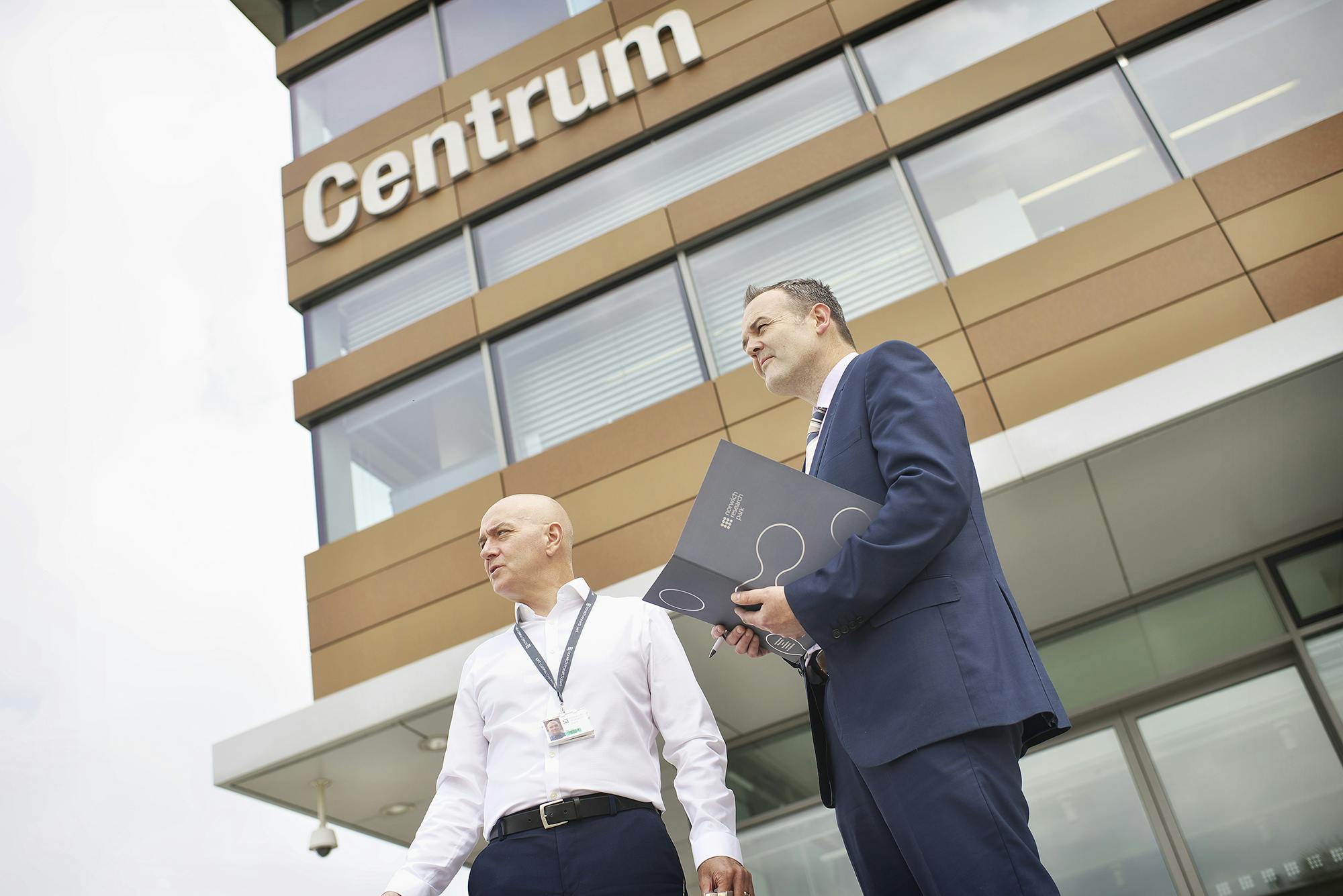
Independent insurance brokers and financial planners
Providing friendly expert advice on insurance, risk management, and financial planning.
Talk to us, it’s what we do best
Tailored advice
There is no need to navigate complex insurance requirements alone. We're experts at what we do. We'll assess your needs and recommend the most suitable cover options, ensuring you get the best protection for you and your assets.
Wide market options
As an independent insurance broker, we have access to a wide range of insurance products from various insurers, often not available to individuals, meaning we can compare policies, cover, and prices on your behalf.
Personalised support
In the event of a claim or policy issue, our in-house claims team ensures quick and hassle-free claims processing, supporting you throughout the process to reach a prompt and fair resolution.
Why Alan Boswell Group?
Truly independent insurance broker
We've been independent since our formation in 1982. It's this independence that allows us to recommend the most suitable product to our clients, ensuring their needs and assets are protected.
Added-value services
Our ever-evolving portfolio of added-value services includes underwriting, claims handling, risk management, employee benefits advice, and financial planning. Whether you use our services in isolation or as part of a package, you are guaranteed to receive the same high standards every time.
40+ years' experience
Our reputation and status as one of the UK’s largest independent insurance brokers and financial planning groups is maintained by our people. Our 40 years' experience is demonstrated by our people, who will support you with friendly, specialist advice whenever you need it.
Nearly £3m donated to charitable causes
We established the Alan Boswell Group Charitable Trust in 2019 and are proud to have been able to donate to good causes in the areas where we operate.
As an independent insurance broker, your needs are at the heart of our business. Learn more about what we do, why we do it, and what makes us different.

Products and Services
We’re experts in both commercial and personal insurance, financial planning, wealth management, and risk management. Browse our products to find out more.
Business Insurance
As an independent insurance, broker we take the time to understand your business, providing you with the cover and advice needed so your business can do what it's meant to do.
Key areas

Agricultural Insurance
Comprehensive protection for farmers, property against various risks such as adverse weather conditions, diseases, and other unforeseen events.

Commercial Insurance
Commercial insurance is designed to help manage and control the impact of losses which occur during your normal business activities.

Property
Comprehensive cover for your physical assets, including buildings and equipment, protecting against risks such as fire, theft, and natural disasters.

Commercial Motor Insurance
Cover for businesses and their vehicles, offering financial protection against potential losses or damages resulting from accidents, theft, or other unforeseen events.
Landlord Insurance
We understand property and have been providing landlords and property owners with specialist cover since 1982. We offer you the advice and cover needed to ensure your properties are insured correctly.
Key areas

Landlord Building Insurance
Landlord building insurance is a vital cover for your rental property we can search the market, compare quotes, and arrange your insurance so you get the best cover available.

HMO Insurance
Comprehensive insurance for Houses of Multiple Occupations (HMOs)

Multi Property Landlord Insurance
Multi-Property landlord insurance for your residential and/or commercial property portfolio.

Landlord Liability Insurance
Landlord liability insurance keeps your tenants, or anyone employed to work on your property, safe.
Personal Insurance
We know that off-the-shelf products are often unsuitable, so we provide a personal service and tailored solutions. We can arrange all types of personal insurance for you, from car and landlord insurance to specialist cover for high-value homes and boats.
Key areas

Motor Insurance
Cover for vehicles ensuring financial protection against potential accidents, damages, and liabilities, providing peace of mind for drivers on the road.

Boat Insurance
Comprehensive protection against damage and loss, as well as liability cover to safeguard you from potential legal claims arising from accidents or injuries.

Home & Property Insurance
Whether you're looking for standard private home insurance or something less common, we can provide a wide variety of insurance products

Travel Insurance
Travel insurance provides cover for unexpected expenses, such as trip cancellations, medical emergencies, lost luggage, and other mishaps.
Financial Planning
Whether you’re looking for advice on investments, pensions or other key financial areas like protection, Alan Boswell Financial Planners are on-hand to help you navigate the changing world of financial planning.
Key areas

Savings and Investments
We can provide advice about a range of savings and investments to make your money work harder.

Retirement Planning
With so many options available, our experts can help you to find the right product for your future.

Wealth Management
More than just investment advice, wealth management encompasses all aspects of your financial affairs, from retirement and estate planning to financial peace of mind for your family and loved ones.

Private Healthcare Insurance
Products such as Private Medical Insurance are available with various levels of coverage, ranging from basic policies that cover essential services to fully comprehensive policies. These can include specialist treatments and even complementary therapies.
Employee Benefits & Healthcare
Our experienced employee benefits team understand that a strong employee benefits package can go a long way in helping your business achieve its goals and keeping your people motivated and feeling appreciated.
Key areas

Workplace Pensions
We can provide expert guidance on plan selection and regulatory compliance, ensuring a tailored and effective retirement benefit program for your employees.

Death in Service Insurance
Death in service insurance is provided by an employer and pays out a lump sum if an employee dies.

Group Critical Illness Insurance
Group critical illness cover offers collective protection for employees, providing financial support if diagnosed with a critical illnesses.

Group Private Medical Insurance
Private medical insurance enables your employees to skip waiting lists, benefit from private hospital rooms, and often receive treatments unavailable through the NHS.
Risk Management
Whether you simply need annual equipment inspections or require a full risk assessment and management programme, our highly qualified, professional risk management advisers have many years of experience in the risk management industry.
Key areas

Risk Management
Meeting your moral and legal obligations should not be a tick-box exercise but an opportunity to understand your business. Let Alan Boswell Risk Management help.

Health & Safety
Receive complete health and safety services, from initial survey to ongoing advice and technical support.

Engineering Inspections
Learn more about our engineering inspection services, including performing and recording mandatory inspections of certain types of plant and equipment.

Health & Safety Training
Whether you're looking to upskill a number of key personnel to help with your H&S obligations or train your entire employee base on the fundamentals of health and safety, Alan Boswell Risk Management can help with your training needs.
Business Insurance
As an independent insurance, broker we take the time to understand your business, providing you with the cover and advice needed so your business can do what it's meant to do.
Key areas

Agricultural Insurance
Comprehensive protection for farmers, property against various risks such as adverse weather conditions, diseases, and other unforeseen events.

Commercial Insurance
Commercial insurance is designed to help manage and control the impact of losses which occur during your normal business activities.

Property
Comprehensive cover for your physical assets, including buildings and equipment, protecting against risks such as fire, theft, and natural disasters.

Commercial Motor Insurance
Cover for businesses and their vehicles, offering financial protection against potential losses or damages resulting from accidents, theft, or other unforeseen events.

Landlord Insurance
We understand property and have been providing landlords and property owners with specialist cover since 1982. We offer you the advice and cover needed to ensure your properties are insured correctly.
Key areas

Landlord Building Insurance
Landlord building insurance is a vital cover for your rental property we can search the market, compare quotes, and arrange your insurance so you get the best cover available.

HMO Insurance
Comprehensive insurance for Houses of Multiple Occupations (HMOs)

Multi Property Landlord Insurance
Multi-Property landlord insurance for your residential and/or commercial property portfolio.

Landlord Liability Insurance
Landlord liability insurance keeps your tenants, or anyone employed to work on your property, safe.

Personal Insurance
We know that off-the-shelf products are often unsuitable, so we provide a personal service and tailored solutions. We can arrange all types of personal insurance for you, from car and landlord insurance to specialist cover for high-value homes and boats.
Key areas

Motor Insurance
Cover for vehicles ensuring financial protection against potential accidents, damages, and liabilities, providing peace of mind for drivers on the road.

Boat Insurance
Comprehensive protection against damage and loss, as well as liability cover to safeguard you from potential legal claims arising from accidents or injuries.

Home & Property Insurance
Whether you're looking for standard private home insurance or something less common, we can provide a wide variety of insurance products

Travel Insurance
Travel insurance provides cover for unexpected expenses, such as trip cancellations, medical emergencies, lost luggage, and other mishaps.

Financial Planning
Whether you’re looking for advice on investments, pensions or other key financial areas like protection, Alan Boswell Financial Planners are on-hand to help you navigate the changing world of financial planning.
Key areas

Savings and Investments
We can provide advice about a range of savings and investments to make your money work harder.

Retirement Planning
With so many options available, our experts can help you to find the right product for your future.

Wealth Management
More than just investment advice, wealth management encompasses all aspects of your financial affairs, from retirement and estate planning to financial peace of mind for your family and loved ones.

Private Healthcare Insurance
Products such as Private Medical Insurance are available with various levels of coverage, ranging from basic policies that cover essential services to fully comprehensive policies. These can include specialist treatments and even complementary therapies.

Employee Benefits & Healthcare
Our experienced employee benefits team understand that a strong employee benefits package can go a long way in helping your business achieve its goals and keeping your people motivated and feeling appreciated.
Key areas

Workplace Pensions
We can provide expert guidance on plan selection and regulatory compliance, ensuring a tailored and effective retirement benefit program for your employees.

Death in Service Insurance
Death in service insurance is provided by an employer and pays out a lump sum if an employee dies.

Group Critical Illness Insurance
Group critical illness cover offers collective protection for employees, providing financial support if diagnosed with a critical illnesses.

Group Private Medical Insurance
Private medical insurance enables your employees to skip waiting lists, benefit from private hospital rooms, and often receive treatments unavailable through the NHS.

Risk Management
Whether you simply need annual equipment inspections or require a full risk assessment and management programme, our highly qualified, professional risk management advisers have many years of experience in the risk management industry.
Key areas

Risk Management
Meeting your moral and legal obligations should not be a tick-box exercise but an opportunity to understand your business. Let Alan Boswell Risk Management help.

Health & Safety
Receive complete health and safety services, from initial survey to ongoing advice and technical support.

Engineering Inspections
Learn more about our engineering inspection services, including performing and recording mandatory inspections of certain types of plant and equipment.

Health & Safety Training
Whether you're looking to upskill a number of key personnel to help with your H&S obligations or train your entire employee base on the fundamentals of health and safety, Alan Boswell Risk Management can help with your training needs.

Insights and Guides

What is an insurance broker? All your questions answered
The role of an insurance broker, how to benefit from their expertise, and how to choose a broker that’s right for you.

Why use an independent insurance broker?
Not sure why you should use an independent insurance broker over a price comparison site? Our latest post has all the answers.

What is insurance excess cover?
Excess protection insurance helps you recover the excess you’ve paid after making a claim. We explain how it works, the type of policies it usually applies to, and how it could save you money in the long run.

Your guide to Public Liability insurance
We answer your commonly asked questions in our guide to Public Liability insurance, including what it is, who needs it and how much it typically costs.

The insurance claims process explained
Whether you’re claiming for your home, car, or business, we take a look at the general claims process so that you can feel prepared should the need arise.





